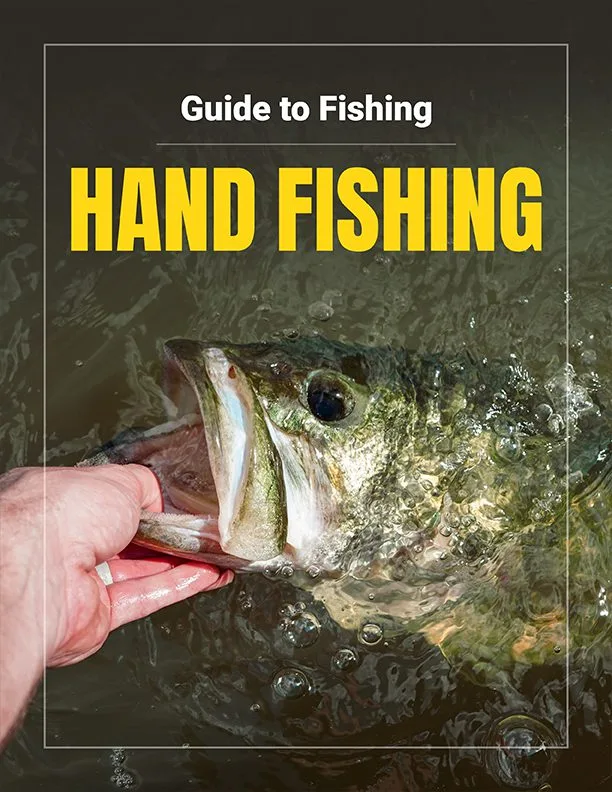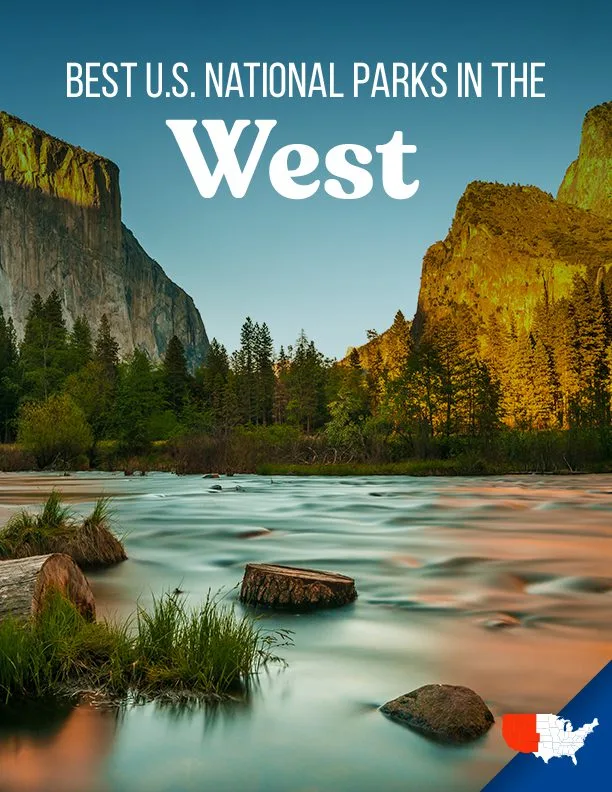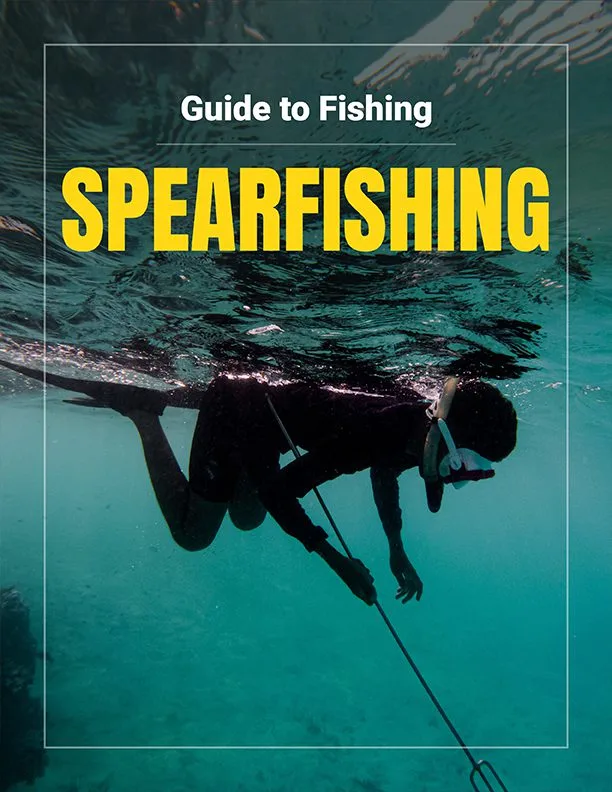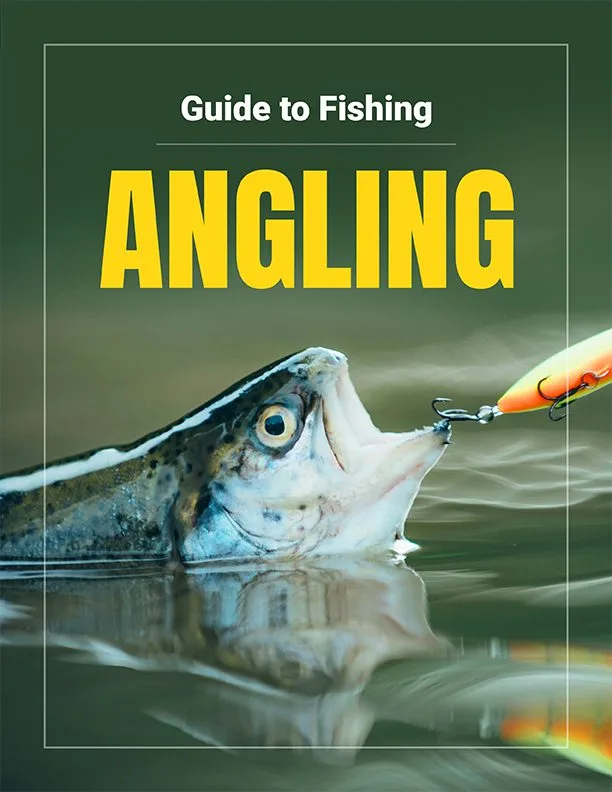The Best West Coast U.S. Beaches
The Best West Coast U.S. Beaches
We are privately owned and not affiliated with the government in any way or form.

Introduction
One of the major draws of North America’s west coast is its beautiful beaches, featuring the sparkling Pacific waters. No matter which type of coastline you prefer, the west coast is sure to deliver. From rocky shores to powdery white sand, you can get your fix at any of the beaches found along the western seaboard and its islands. Some of the beaches situated along the west coast are ideal for swimming, surfing and snorkeling. Others are best known for sailing, fishing and crabbing.
The beaches on the west coast have a different feel from east coast beaches, since they tend to have higher surf, more rock formations and different kinds of wildlife. Many coastal areas in the west give visitors the best of both worlds: beaches and nearby mountains for a truly diverse vacation experience, and they are ideal locations to catch truly amazing sunsets. Regardless of the type of vacation you’re planning, one thing remains true – a day trip to the beach will be the highlight of any trip to the west coast.
There are hundreds of beautiful beaches to choose from. To make it easy, we’ve compiled a list of the top 14 most iconic beaches found in the Pacific. As you plan your vacation, be sure to include some time to see one or more of these stunning shorelines. Whether you’re headed to chilly Washington or sunny Hawaii, you can be sure to find a postcard-worthy beach on this list. Without further ado, here are the top 14 must-see beaches on the west coast.
Washington
Rialto Beach, Forks
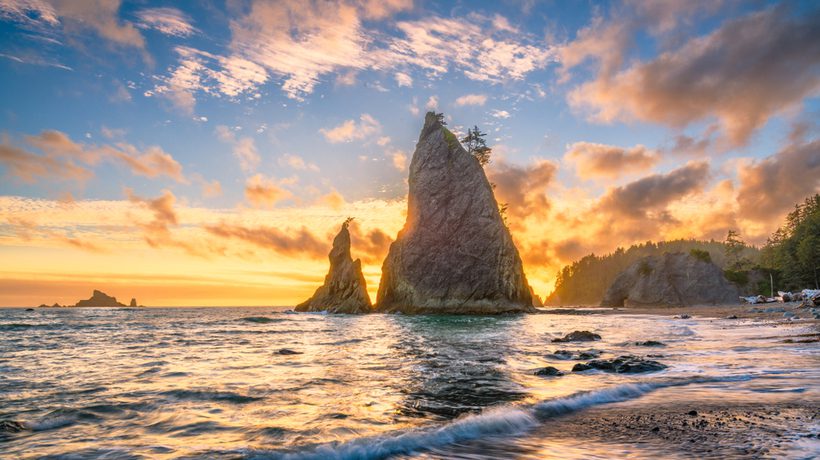
Located along Washington’s famed Olympic Peninsula in northern Washington state, Rialto Beach is perfect for those who want to get both an ocean view and some peaceful time in the forest. It is located just outside of Olympic National Park, near the Quileute reservation, about a four-hour drive from Seattle or four and a half hour drive from Olympia.
Visitors travel into Olympic National Park, take State Route 110 and then travel Mora Road until they reach its end where there are two parking areas. From there, they will find an unspoiled ocean shore which gives them a great view of the pounding surf of the Pacific Ocean and nearby James Island. Rialto Beach is known for its rock formations known as sea stacks, huge rocky islands jutting out of the water, some of which have trees on them and impressively large pieces of driftwood.
There is an abundance of wildlife, including whales, bald eagles, otters and sea lions which alone are enough to make the visit worthwhile. More than that, Rialto Beach is a prime location for backpackers, hikers and campers. Visitors can use Rialto Beach as a starting or ending point for their adventures. It is just a flat two mile walk on the beach from Rialto Beach to the picturesque sea arch known as Hole-in-the-Wall, and there are plenty of tidepools to explore along the way, especially around Hole-in-the-Wall.
While you can bring pets to some areas of Olympic National Park, different rules apply depending on which areas you visit; the trail from Rialto Beach allows dogs only as far as Ellen Creek, about a mile from the parking lot. If interested in tidepooling, be sure to check the tides before you go, since this is only available at low tide.
If you just want to explore Rialto Beach for a few days, you can set up a tent along the shore. There are also multiple campgrounds nearby, including the Mora campground, which is only three miles away. As one of the nicer campgrounds in Olympic National Park, Mora gives you access to fresh water, flushing toilets and even some RV spaces so you can bring home with you. If you choose to hike overnight or camp along Rialto Beach, remember to get the appropriate permits from the Wilderness Information Center in Port Angeles. You must pick up these permits in person.
While camping on Rialto Beach can be a great experience, remember to set up your tent beyond the tideline. Otherwise, your camping experience will quite literally be a washout. If you choose to use the nearby campgrounds instead, keep in mind that different campgrounds have different amenities (some primitive campgrounds and others with toilets and running water). You can find each campsite’s features on the National Park Service’s website.
There is more full-service lodging nearby if camping isn’t your thing. The Quillayute River Resort has porches with river views and is only a few miles from the beach. The Miller Tree Inn bed and breakfast in Forks is a charming place to stay.
You can visit Rialto Beach any time of year, but visitors who want to experience the most popular Native American celebrations should come during July or August. The summer is the best time to visit, not just for the mild temperatures, but because falls and winters tend to be wet with daily rain and fog. Visitors who want to explore other shorelines can check out the Quillayute River or cross it to reach First Beach, another great camping spot. If you decide you want to see more of Olympic National Park, you can hike the nearby Second Beach Trail or drive to Hoh Rain Forest. The river near Forks is known as a fisherman’s paradise, with bountiful king salmon and steelhead.
On the other hand, you might want something a little more urban after your beach experience. In that case, check out the Forks, which you may remember as the setting for Stephenie Meyer’s Twilight series. Even if you aren’t into vampire tours or memorabilia, Forks has plenty of attractions, including the annual RainFest art festival, adorable shops and the famous burgers at Sully’s Drive-In. The nearby town of Port Angeles also has plenty of things worth seeing, with its various Native American cultural events, specialty shops, and local restaurants.
Pacific Beach State Park, Pacific Beach
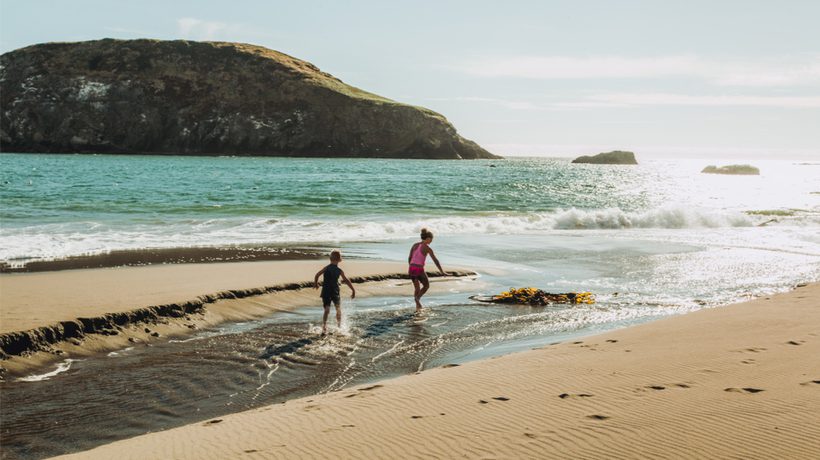
Pacific Beach State Park is in central Washington, a 90-mile drive directly west from Olympia on SR 109. The state park encompasses 17 acres and over 2,300 feet of shoreline. Since it is a state park, you will need to purchase a Discover Pass unless you are camping or renting overnight accommodations. Discover Passes cost $30 for an annual pass or $10 for a day pass.
Pacific Beach is the perfect destination for those who want a vacation where they can immerse themselves in nature and get away from civilization for a while. It’s one of the most popular spots along the coast to spot migrating whales; the best time for this activity is in January and between March and May. So, if you are visiting during those times, bring a pair of binoculars.
The beach is flat and wide, making it the perfect place to lay out your blanket or fly a kite. Build a sand castle with the kids or go digging for razor clams during the season of September through December. Some beachgoers like to fish from the shore. There are plenty of fish in the area including red-tailed surf perch, salmon and cutthroat trout. A recreational license is required for fishing or shellfish harvesting. Crabbing is another popular pastime, but it is done by boat, so you would have to rent or charter. If swimming, beware of rip currents and drifting logs, which can be hazardous.
The state park has campgrounds where you can pitch a tent, rent a yurt, or hook up your RV. There are restrooms with showers and picnic areas. Visitors to the park can also make a small bonfire on the beach, as long as it is at least 100 feet from vegetation. Gaze at the stars over the Pacific while you kick back and make s’mores for a relaxing evening. If you are a phone junkie, you may even be able to access free, high-speed wifi depending on the part of the beach you are on. Pacific Beach has several bed & breakfasts as well as small inns that have hotel rooms and cottages for rent.
The beaches are open year-round, but the best time to visit is the summer. Late fall is sunny and clear, while the winter brings blustery storms, which can put on quite a show. There’s not much to do in the town of Pacific Beach, but it is just a short drive north to Moclips, which has unique shops such as the Hi-Flyers Kite Shop and the Wacky Warehouse. On the last weekend in February, you can go to the Chocolate on the Beach Festival, a must-see for chocoholics. Or, check out the Kelpers Festival during Labor Day weekend, where you can see a parade, do some street dancing and witness the yearly tug-of-war contest between Moclips and Pacific Beach.
Another charming nearby town is Seabrook, which features a variety of shopping and dining options and unique mushroom foraging adventures. Browse vendors at the Seabrook Saturday outdoor market or attend the annual Gnome and Fairy Fest in August. If you are in Seabrook any time from the end of November through December 31st, keep your eyes open. The Winter Glass Float Find is happening then; if you find one of the beautiful blown glass orbs around town, it is yours to keep.
Long Beach Peninsula, Long Beach
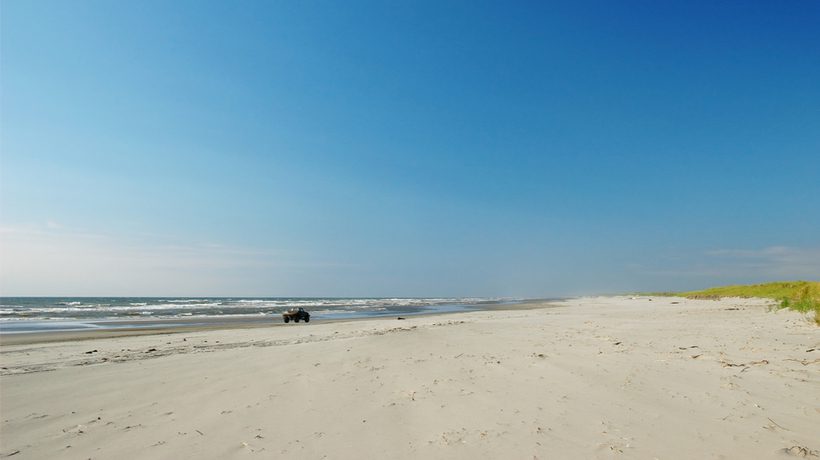
This 28-mile long shoreline is located on a peninsula jutting out into the Pacific from Washington state’s southernmost corner. Locals claim that it is the longest beach in the world. Whether this is true or not, this beach provides plenty of things to do.
Since it’s such a long beach, you can reach the Long Beach Peninsula from any number of locations. Many visitors come from Portland or Seattle, but Astoria, a historic town about 20 miles south of Long Beach Peninsula, is another popular option. However which way you come, you’re certain to have a good time. The shoreline of the Peninsula is home to six state parks, including Cape Disappointment State Park. Despite the name, Cape Disappointment is anything but disappointing with its old growth forests, breathtaking Pacific views and historic lighthouse.
Kite flying is a very popular activity along the Peninsula, and you can even build your own kite at the World Kite Museum & Hall of Fame in the city of Long Beach. Other athletic activities, such as volleyball and horseback riding along the beach or traveling the famous Discovery Bike Trail, are also available. If you’re more of a hiker, check out the various hiking trails throughout the region, especially the trails in Cape Disappointment State Park and Leadbetter Point State Park.
Between mid-December and early February, you can spot Pacific gray whales or orcas cavorting about offshore. The Long Beach Peninsula is home to over 300 species of birds, such as great blue herons, trumpeter swans, bald eagles and countless migratory birds. The Willapa National Wildlife Refuge, which starts in the northern part of the Peninsula at Leadbetter Point and runs down to the shores of Willapa Bay, is teeming with wildlife including Roosevelt elk, chum salmon, bears, beavers and migratory birds.
Perhaps you’d rather try your hand at salmon, halibut or tuna fishing in the Port of Ilwaco or see if you can catch some oysters in Willapa Bay. Many families enjoy digging for razor clams along the beach. If fishing doesn’t get you close enough to the water, enjoy a swim or get out your surfboard and ride the waves for a while. If you come from warmer parts of the country, keep in mind that the water can be cold, especially if it isn’t the summertime.
While you can visit Long Beach Peninsula any time of the year, keep in mind that different activities have different seasons. For example, razor clam season goes from March to May, so be sure to come during that time if you want to dig for razor clams during your stay. Remember to bring a raincoat; after all, you are staying in Washington. Public restrooms are often available, but this varies depending on which section of Long Beach Peninsula you visit.
There are 1,000 RV spaces on the Peninsula or you can rent a yurt in Cape Disappointment State Park for a unique camping experience. Or, get the flavor of the area by staying at a cottage at Enchanted Cottages, Klipsan Beach Cottages, Shakti Cove Cottages or Anchorage Cottages. There are a number of charming bed & breakfasts, hotels and resorts nearby, or if you have a larger group, you can get a vacation rental.
If you want a break from swimming to get some food, there are many reputable restaurants available nearby. Experienced visitors recommend visiting Ole Bob’s Galley and Café, one of the best seafood restaurants in Ilwaco, or Depot Restaurant, a fine gourmet restaurant in Seaview. Long Beach has many other affordable dining options, such as the Hungry Harbor Grille or the Lost Roo. Or, pick up some street food, craft items or fresh produce at the Saturday Market at the Port of Ilwaco or the Columbia Pacific Farmer’s Market.
History buffs can appreciate the dozens of museums and memorabilia dedicated to Lewis and Clark, whose expedition traveled to the Long Beach Peninsula in 1805. The Lewis & Clark Interpretive Center, located in Cape Disappointment State Park, is especially well worth seeing.
You may also want to attend one of the numerous annual events that take place along the Long Beach Peninsula, including the Washington State International Kite Festival in August or the Annual Sand Stations Sandcastle Competition in July. If you like art or curios, be sure to stop by some of the great locations along the Peninsula, such as Ilwaco’s Don Nisbett Art Gallery or Ocean Park’s Wiegardt Studio Gallery.
Oregon
Secret Beach, Brookings
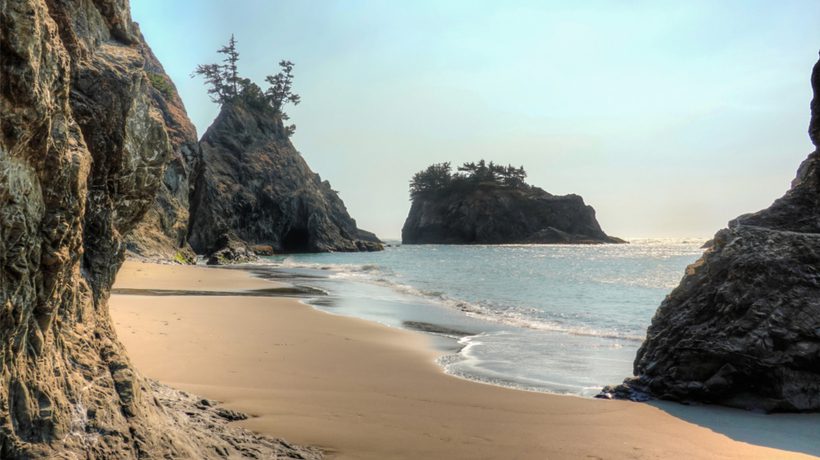
As the name implies, this beach is not easily accessible, but you will be happy when you make the effort to find this gem. It is located in the center of Oregon’s coast in the Samuel H. Boardman Scenic Corridor. The Secret Beach isn’t easy to find – it’s located at the northernmost end of the corridor where the Oregon Coast Trail skirts between the road and a popular overlook to Thunder Rock Cove. From there, you will need to hike about a third of a mile north until you find Miller Creek, where you’ll see a trail that leads down to a pocket beach. The hike to the beach is steep, but short.
Secret Beach is picturesque and romantic, and it isn’t hard to imagine yourself as a character in a fairy tale. The beach itself looks like something out of a movie set during ancient times. The sand is fine and hugs the coast, which consists of cliffs and massive granite boulders scattered near and around the beach.
Since many of these huge sea stacks are in the surf, the beach is sheltered from wind and waves, making it a calm oasis. It’s situated in an area where Miller Creek meets the ocean, so the beach features a lovely waterfall as well. Because it is remote, you’ll likely encounter just a few, if any, people there. Be sure to visit only during low tide, since it is largely under water at other times.
The weather is typically cloudy and rainy in the winter and fall, with clearer skies in spring and summer. Expect fog any time of year; this can make for hauntingly beautiful photographs. Campfires are not allowed. There are no restroom facilities here, but you can access some at the Arch Rock parking lot or at Whaleshead Beach.
Hike the Oregon Coast Trail to the north of the beach to see lush coastal forest plus ocean views or walk along the beach itself. Kids and adults can enjoy climbing on the rocks and exploring the sea caves. Nearby, you can visit the Face Rock State Scenic Viewpoint. This iconic area has gorgeous views, including sunsets behind Face Rock, which does actually look like a face. Natural Bridges is to the south and has dramatic ocean views, rock formations and white ocean foam.
Stay in Brookings at the Westward Inn for budget-friendly accommodations or at the Whaleshead Beach Resort, which boasts beach views.
Cannon Beach, Cannon Beach
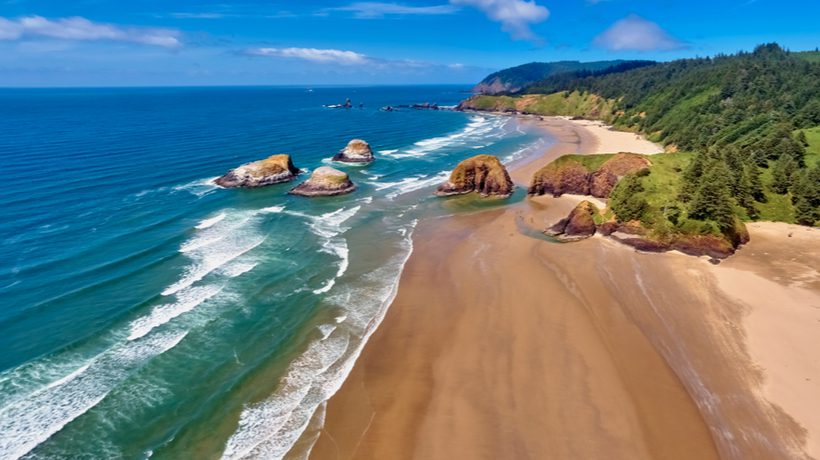
Located just outside the town of the same name, Cannon Beach offers four miles of brilliant sand and several sights you can’t find anywhere else.
Once you leave your hotel and park your car near the beach (locals recommend parking along Gower Street or the downtown locations 2nd Street and Tolovana Park), you can easily spend hours walking, swimming or just relaxing on Cannon Beach’s shoreline. The beach is wide here, and tends to get somewhat crowded, especially during sunny summer days.
Watching the aquatic life and other wild animals is another great pastime, since Cannon Beach is home to Haystack Rock, a legendary lava rock formation that’s also part of a refuge for puffins and other wildlife. Early spring to midsummer are the best times to spot puffins here. During low tide, you can walk to the base of Haystack Rock and look for sea stars, anemones, crabs and other marine creatures that inhabit the tidepools.
Other formations, including Bird Rock at Chapman Point, provide homes to other incredible birds, such as bald eagles and murres. If you’re more interested in photography, these and other rock formations (such as Needles, two rock spires on Haystack Rock’s southern side) look great on camera, especially if you photograph the starfish and other marine life in the tide pools around each formation. The best time for shooting photos is at sunset, when the sun sets behind these rocks and makes for postcard-worthy snapshots.
When you get tired of the beach, the town of Cannon Beach has plenty of restaurants, restrooms and other amenities that are easily accessible. You may want to check out the Icefire Glassworks glass-blowing studio or art exhibitions at Cannon Beach Gallery. Annual events include the Cannon Beach Sandcastle Contest in June and Get Lit at the Beach, a literary event in April where well-known authors visit to sign books or speak on various topics.
Local restaurants, including Driftwood Restaurant and Lounge and Insomnia Coffee Company, are also well worth a visit. If you’d rather cook your own food, check out the Cannon Beach store or visit grocery stores in the nearby town of Seaside for better prices. For a more rustic experience, try cooking your food in one of the fire pits along the beach.
While you can visit Cannon Beach any time of year, experienced visitors recommend coming after Labor Day, since summer crowds can be a real bother. Keep in mind that this beach is in Oregon, so you’ll want to bring a raincoat for the commonly wet weather. Be sure to bring a wetsuit if you plan to swim, since the water can be rather cold.
Some of the nearby locations, including Nehalem State Park, have campgrounds for tents or RVs. As always, be sure to research permits and other permissions before you start planning your camping trip. There are a plethora of other lodging choices in Cannon Beach, from beachside cottage vacation homes to resorts, hotels and bed & breakfasts, many with spectacular views.
If you want to ride the waves a little, travel to nearby Ecola State Park, where you can go surfing at Indian Beach, or check out Short Sand Beach in Oswald West State Park. Hikers may want to try the various trails that wind through Ecola Creek Forest Reserve or up nearby Saddle Mountain. Other hiking trails can be found along the renowned Oregon Coast Trail, such as Tillamook Head Trail in Ecola State Park.
Rockaway Beach, Rockaway Beach
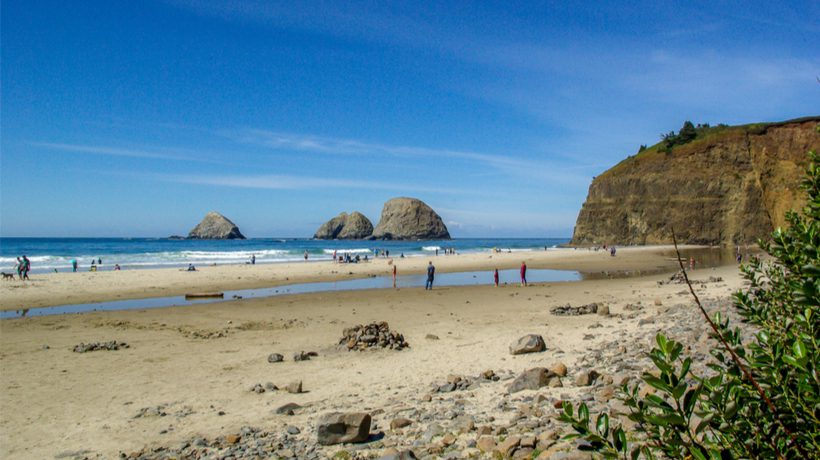
The residents of Rockaway Beach are proud of many things. For one, it’s where the Pronto Pup, a popular Oregon corn dog, was invented in the 1930’s. Secondly, it has a seven-mile beach (also called Rockaway Beach) that people have loved visiting since 1920. Just outside the city, this shoreline provides a great place to relax.
Once you leave your residence and head for the city’s southern side, it’s fairly easy to reach the beach. Locals recommend parking by the Rockaway Beach Chamber of Commerce off US Highway 101 or the parking areas along South Pacific Street. As you walk along the beach, you will be treated to views of Twin Rocks, a renowned rock formation that people have described as looking like the Loch Ness Monster, a dragon and various other shapes. If you like photography, be sure to snap a few photos of this Oregon landmark.
The wide, flat beach is perfect for exploring or walking, with plenty of room for flying kites and other activities. Collectors enjoy scouring the shoreline for glass floats, which are glass balls that fishermen once used to attach to their nets to keep them afloat. No one uses these glass balls for fishing anymore, but many of them broke away from fishing nets and still float through the Pacific Ocean, washing up on beaches in Oregon and other areas.
If you’re an animal lover, be sure to watch the beach for whales or keep your eyes on the horizon for American wigeons and other bird species. If you get tired of just exploring the beach above the water, drop a fishing line into the water or try your hand at swimming or scuba diving along the coast. Windsurfing and kayaking are also popular sports at Rockaway Beach.
When you want a longer break from the water, check out the surrounding hiking trails or take a walk around the giant western red cedar trees in the Old-Growth Cedar Wetlands Preserve. The Oregon Coast Scenic Railroad is fun for the whole family, taking you on a ride on a locomotive from 1910 which skims the coast. There are also plenty of annual events to experience, including an excellent Fourth of July Parade and a weekend-long Pirate Festival (complete with a treasure hunt and carnival rides) in June.
While Rockaway Beach is open throughout the year, Oregon beaches typically see the most visitors during the summer season (June to September). If you’re looking for the least number of visitors, come from October to May, although the temperatures and weather will be a bit different. Storm watchers enjoy coming to Oregon beaches during the off-season, which gives you an idea how different the weather can be. Remember to bring a raincoat if you’re coming during the off-season.
Rockaway Beach has public restrooms and various nearby restaurants, so you don’t have far to go if nature calls or you just want a quick bite to eat. Local restaurants include Rick’s Roadhouse, known for its quality food and dance floor, and the Sand Dollar Restaurant & Lounge, known for its eclectic menu and great views of the beach. Rockaway Beach is also home to Tillamook Cheese, and there are plenty of treats for foodies, including local wines, cheeses and smoked meats.
Stay at one of the hotels or resorts, rent a vacation home or camp out at one of the many campgrounds. You can check out Trask River County Campground, Rockaway Beach RV Park, Jetty Fishery Marina & RV Park or the Barview Jetty County Campground.
California
Butterfly Beach, Montecito
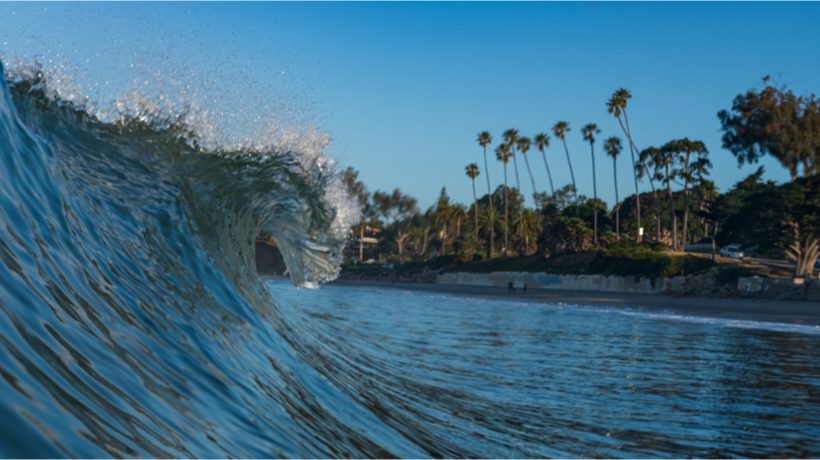
Located just outside Montecito, home of many Hollywood actors and celebrities, Butterfly Beach offers a great beach experience and a taste of California’s wealthy and star-studded communities. You may even spot a celebrity, as several make Montecito their home. Some people have called this beach “The American Riviera,” although it’s very affordable with its free parking and public access.
From downtown Santa Barbara, take Highway 101 to Olive Mill Road, which turns into Channel Drive. After you park your car along Channel Drive or Butterfly Lane, you’ll find it’s an easy walk to Butterfly Beach. Many people enjoy walking along the beach, which has beautiful palm trees and cliffs.
Depending on when you come and how high the tide is, you can walk the shoreline to Hammonds Beach or East Beach, also well worth visiting. The views get even better whenever the sun rises or sets, since Butterfly Beach is uniquely placed to give great views of both the western horizon and east toward shore.
Bring your pets to enjoy the walk with you. Or, if you want to experience the shoreline at a faster pace, consider renting or bringing a bicycle and taking the bike path that leads all the way to Santa Barbara Pier. Surfing, swimming, kite flying and watching for local marine animals (including dolphins and the occasional sea lion) are also great activities. If you’re looking for water activities, consider renting a kayak or taking paddleboard lessons.
When you decide you want a break from exploring or swimming, check out the Four Seasons Biltmore hotel next to the beach, known as home of the exclusive Coral Casino Beach and Cabana Club. Don’t worry if you can’t make it into the club – the hotel’s regular drink bar and meals are terrific. For less expensive dining options, check out local restaurants like Jeannine’s Bakery & Café or Los Agaves.
While you can visit Butterfly Beach any time of year, beaches in California tend to get pretty busy from June to September. Consider coming during a different time to avoid the crowds, preferably early in the morning to take advantage of low tides. Remember to bring your own food and to use restrooms before you come, since one of Butterfly Beach’s few downsides is the lack of public bathrooms.
If you want even more beach or just the opportunity for different beach activities, travel to nearby East Beach to play some volleyball, enjoy a meal at East Beach Grill or tour the Cabrillo Pavilion Arts Center. When you’re ready for some city fun, the town of Montecito has plenty of things to see, including the botanical gardens at Lotusland and the Santa Barbara Vedanta Temple in the foothills of the Santa Ynez Mountains. Other pieces of notable architecture include the Montecito Inn, built by famous actor Charlie Chaplin, and El Fureidis, a mansion you may remember seeing in the movie Scarface. Other historic buildings, such as the Casa del Herrero, are open for tours if you call ahead of time.
Adventure lovers can take flight with the country’s longest-running paragliding school, Fly Above All Paragliding, which takes off from Elings Park. Or, take a guided sea cave kayaking and snorkeling tour of the Channel Islands National Park and Marine Sanctuary, considered the “Galapagos of North America” for its untouched and prolific wildlife.
Crystal Cove, Laguna Beach
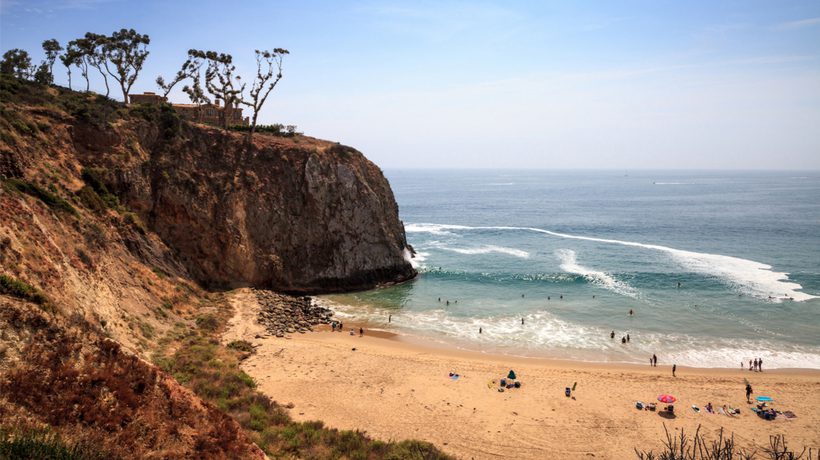
No one’s quite sure which of the three miles of beaches is the best, but many agree it’s a shoreline that any serious beachgoer should visit. Located within Crystal Cove State Park and just outside the towns of Laguna Beach and Newport Beach, Crystal Cove is home to some amazing water activities.
Once you travel from the park’s entrance (easily accessible from Pacific Coast Highway, Route 1 or Interstate 5) and reach the shoreline, you can pick any of the multiple beaches. Each of the major sections has parking lots nearby. Surfing, kayaking, paddle boarding and fishing (within certain limits) are all great activities you can enjoy in Crystal Cove State Park. Adults and children alike will delight in looking at animals like sea stars, hermit crabs and anemones in the tidepools at Rocky Bight, Pelican Point and Little Treasure Cove. It is prohibited to remove or collect any of these, including shellfish, since this is a state marine conservation area.
If you’re looking for something to do below the water’s surface, try swimming or exploring Crystal Cove’s underwater marine park. Snorkelers and scuba divers highly recommend diving in to see the 1,140 acres of marine plants (including kelp forests), animals (including octopuses and sea cucumbers) and other wonders, including the sunken remains of a World War II-era plane.
Once you get tired of the water, you can change in the restrooms near each parking lot and use the outdoor showers there. After that, try the 17 hiking trails throughout Crystal Cove State Park, perfect for viewing the land-based wildlife, including 180 different species of birds. You can also try horseback riding, bicycling along the designated biking trails or camping in one of the various campsites throughout Crystal Cove State Park.
If you’re looking for comfort when you camp, stick with one of the sites in Moro Campground, which include showers, restrooms and spaces for RV’s. Those who are looking to rough it can set up camp at one of the three primitive camping sites spread through the park’s backcountry area, which are perfect for backpack hikers or campers who want only the essentials. Remember to bring your own hiking gear and, if you’re camping in one of the primitive camping sites, bags to carry your own trash out of the park. You can ask about renting one of these cottages if you’re not interested in camping or staying in nearby towns.
While you can visit Crystal Cove State Park any time of the year, keep in mind that California’s popular beach season is June to September, and Crystal Cove will likely be more crowded during that time. If you get hungry for some restaurant-style fare, check out the Beachcomber Café in the park’s Historic District, an area of restored cottages left over from the 1930’s and 40’s. Many experienced visitors also recommend dropping by Ruby’s Crystal Cove Shake Shack, a renowned diner off the Pacific Coast Highway.
After lunch, there is plenty to do in town. Originally an artists’ colony, Laguna Beach still has dozens of art galleries and annual art events, including the Sawdust Art Festival in June and the Laguna Dance Festival in September. During the winter between the last weeks of November and mid-December, check out the Sawdust Art Festival’s Winter Fantasy, featuring handcrafted goods, live entertainment, winter-themed art classes, glassblowing demonstrations and seven outdoor cafes.
La Jolla Cove, La Jolla
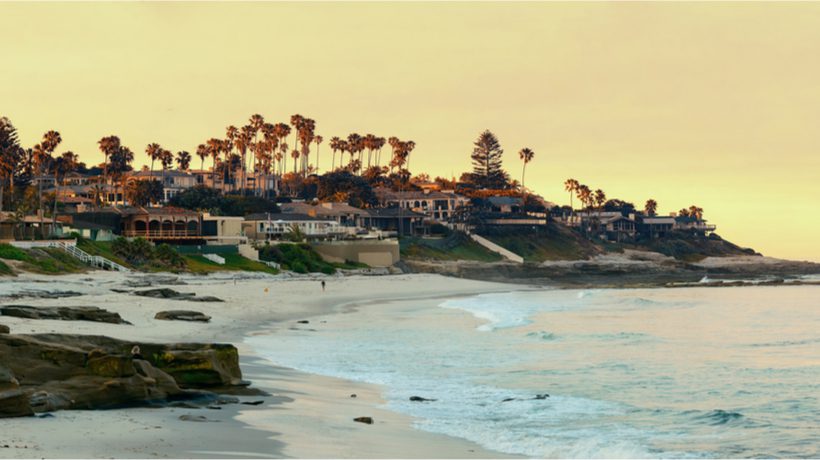
Located on the northern side of San Diego, La Jolla Cove is part of the San Diego La Jolla Underwater Park Ecological Reserve. From San Diego, take Torrey Pines Road to Prospect Street and then turn right and take it to Coast Boulevard, where there is street parking.
Visibility levels often reach 30 feet, which is ideal for snorkelers and scuba divers. This makes it a great place to see local marine life (such as yellowtails and sea lions) and plant life (such as kelp and seagrass). Due to its charming and natural beauty, this tiny beach is the most photographed of all southern California’s beaches.
While La Jolla is a fairly small beach (visitors have to travel down steps etched into the sandstone cliffs surrounding it), it contains an extraordinary amount of plant and animal life, such as orange Garibaldi, sea turtles and leopard sharks (yes, they are safe to swim among).
After parking their vehicles in nearby garages or parking lots, visitors can head down to the beach and enjoy scuba diving, swimming and snorkeling. Locals have described La Jolla Cove as San Diego’s best snorkeling destination. You can bring your own snorkeling or scuba equipment, rent it there or join a guided snorkeling tour. The best places to snorkel include the immediate cove area, south of the cove near the kelp beds and along the caves to the north. If you come at the right time, you can take part in swimming competitions inside the cove.
To learn more about the marine life and ecosystem, rent a kayak or join a guided kayak tour of the Cove. While you can take stand-up paddleboard lessons at La Jolla Cove, visitors are not allowed to bring flotation equipment (such as surfboards, boogie boards) or fish in the Cove’s waters. Since La Jolla Cove is part of a marine reserve, visitors can take pictures of animals but can absolutely not take any of them (not even seashells) as souvenirs. Also, remember to keep a safe distance from the animals to avoid being bitten.
La Jolla Cove’s waters are generally safe to swim in, even for small children. However, once or twice a year, a hike in bacteria levels may lead to temporary closure of the ocean waters. These closures usually last only a few days.
Paddleboards and bicycles are also available nearby to rent. Visitors who only want to take a short swim and wait for everyone else to finish can relax at Scripps Park, a grassy public park not far from the Cove. There are several public restrooms and showers in Scripps Park, which also has areas you can use to change out of your swimsuit. Remember to come early if you want to get a good parking space, as street-side parking spaces and parking lots fill up fast.
While you can visit La Jolla Cove any time, experienced visitors recommend coming to La Jolla Cove between May 16 and December 14, when the nearby Children’s Pool area is open. The Children’s Pool has a sea wall that creates a protected area, which is perfect for young children. Seals and sea lions love it too! The sand and the steps leading down to the beach can be very slippery, so remember to bring shoes with a good grip for walking on wet surfaces.
When you’ve worked up an appetite, grab some lunch at the Brockton Villa, located in one of La Jolla’s first beach cottages. Try seasonal fare or their famous Coast Toast, a decadent and unique spin on French toast. Or have a cocktail and watch the sun set at the rooftop bar at George’s at the Cove.
Visitors who want to check out nearby attractions can visit Scripps Park or Coast Boulevard Park, travel the hiking trails near and around the park areas or check out the San Diego County Museum of Modern Art. Visitors seeking to tour and enjoy the urban areas can explore La Jolla Village and other parts of charming downtown San Diego. La Jolla hosts a variety of seasonal events, such as the Taste at the Cove food festival in summer, the La Jolla Arts and Wine Festival in fall and the La Jolla Concours D’elegance car show in wintertime.
Pfeiffer Beach, Big Sur

This hidden beach (no signposts point the way here) is well worth the effort. South of Big Sur Station on Highway 1, turn onto Sycamore Canyon Road and take it to the shore. The road is twisting and narrow, so no RVs are allowed. Park in the parking lot and walk a short way to the beach; parking is $12 and must be paid in cash. This is where Sycamore Canyon Creek empties into the Pacific, and you will see a sandy dune on your right and a cove partially protected by Pfeiffer Point on the left.
The focal point of this beach is the massive rock formations just off the shore, one of which – Keyhole Arch – has an opening that allows the pounding surf and the last rays of the sunset to come through. As you can imagine, this makes for dramatic photos.
While it is possible to climb up on the rocks for a different view, be sure to bring grippy shoes, as the rocks are sharp and can be slippery. Especially spectacular sunsets can be seen around the winter solstice, when the angle of the sun’s rays shine brilliantly through the “door” in Keyhole Arch. Get there early to set up your tripod, because this is a popular time for photographers.
Another unique feature of this beach is in the north end, where you can see purple sand formed by the erosion of the manganese garnet cliffs. The streaks of purple sand are especially visible just after it has rained since this brings the color out. Walk along the shore and keep an eye out for marine life and birds. Swimming is not recommended, as the currents are swift here and the water is cold year round. It is usually cool and breezy, so it is not ideal for sunbathing. Visitors like to bring a picnic (and a sweater) to enjoy the view, breathe sea air and gaze at the gorgeous sunsets.
Pfeiffer Beach is part of the Los Padres National Forest and is open all year from 9:00 AM to 8:00 PM or sunset, whichever is earlier. There are picnic tables and toilet facilities there, and dogs are allowed, as long as they are leashed. There is no food available on the beach, but you can grab a bite at Sierra Mar for beautiful views, the Big Sur Bakery or the Big Sur Roadhouse, all within two miles of the beach.
You can also eat and shop at Nepenthe, a landmark designed by a disciple of Frank Lloyd Wright. The town of Big Sur has a number of interesting boutiques and art galleries where you can buy gifts or mementos of your stay. While you are in the area, you may also want to take a drive over to Limekiln State Park to take in majestic redwoods, waterfalls and coastal views.
The Big Sur Lodge is about 15 minutes from the beach. You could also stay at the Pfeiffer Big Sur Campground in Pfeiffer Big Sur State Park. It has 189 RV and tent sites on and around the Big Sur River as well as cabins that sleep up to four people. This is a very popular campground and fills up quickly; it is recommended to make your reservations six months or more in advance.
Hawaii
Aliomanu, Anahola (Kauai)
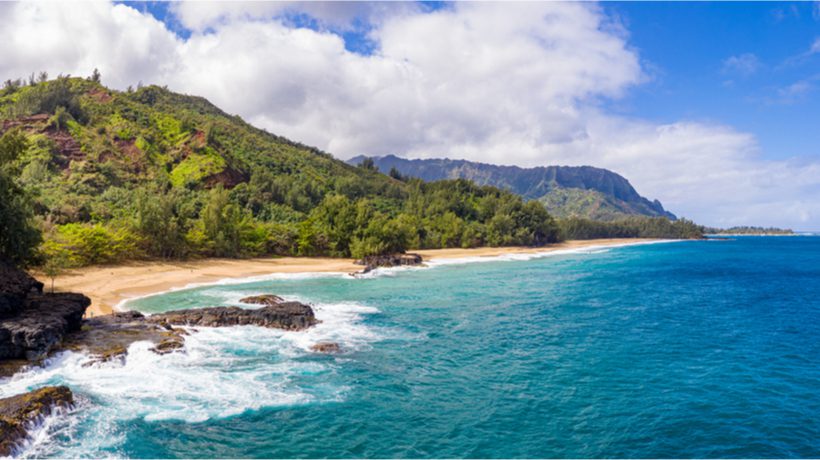
One of the lesser-known beaches on this list, Aliomanu is located on the northwestern side of Kauai, also known as “The Golden Isle,” and is perfect if you’re looking for somewhere to relax and get away from the typical tourist crowds.
After driving onto the second Aliomanu road (around mile marker 15 on State Highway 65) and taking a left on Kalalea View Drive, you will reach a parking lot that gives you access to Aliomanu Beach or nearby Papa à Bay. From there, you have two sections of unusually peaceful beach to walk and explore.
Aside from the local canoe club, fishermen plying their craft and people staying in nearby vacation homes, you likely won’t see many faces during your time on this beach. It’s the perfect place to relax and enjoy the sun. The beach is bordered by vegetation and it is not very wide, so it is not ideal for land-based sports like volleyball or kite flying. The main attraction to this beach is its reef that is just 100 feet offshore.
If you’re looking for something more than just long walks along the beach and sunbathing, each section of Aliomanu Beach has space for some great activities. Head to the northern section and use the tidal pool for snorkeling. The reef around Aliomanu Beach has some great marine life you can explore, including the occasional monk seal, green turtles, butterfly fish and Hawaii’s state fish, the reef triggerfish. Because of the rocks and currents, swimming in the north part of the beach can be risky. Some snorkeling outfitters rent sea scooters, motorized snorkeling devices that let you cover more area and help navigate areas of swift current.
If you’d rather go for a relaxing swim, head to the southern section with its great lagoon. The local fishermen typically set up their operations in the southern section, so you can also take the time to watch them harvest seaweed and catch fish with poles, nets and other methods. Depending on when you come, you may even get to get to see the local fishermen hunt for octopuses.
Visitors also enjoy canoeing in Aliomanu Beach, so bring your own canoe and see how you like the waves. Since it is a public beach, there aren’t any restrooms, but restaurants and other public places in nearby towns are only about 10 to 15 minutes away by car.
While Kauai’s weather is good enough that you can visit any time of year, experienced visitors have noted that the currents get wilder during winter (November to April). Be sure to do your research and consider which activities you want to do before coming. There aren’t any picnic tables or restrooms on this beach. Also, remember to bring your own food and swimming equipment.
If you decide you want a quick bite to eat, the nearby towns of Kapa’a and Anahola have plenty of options only a few minutes away. In Anahola, check out Duane’s Ono-Char Burger with its 14 different burger options and numerous ways you can combine ingredients to create your custom burger. In Kapa’a, check out Pono Market with its authentic Hawaiian food, including plenty of options for vegans or vegetarians as well as meat eaters.
When you want to absorb some local culture, check out the various sights and other opportunities in Kapa’a. Ho’olalaea Waterfall or Kauai’s Hindu Monastery are always worth seeing, and hikers will enjoy spending a few hours on Kuilau Ridge Trail or Sleeping Giant Trail.
There are vacation houses for rent just steps from the beach, and a variety of other options such as the Hotel Coral Reef Resort boutique hotel in Kapáa or the luxury cottages of the Palmwood in Kilauea. If camping is more your speed, the Kumu Camp campgrounds is nearby for a rustic beachfront experience.
Kaanapali Beach, West Shore (Maui)
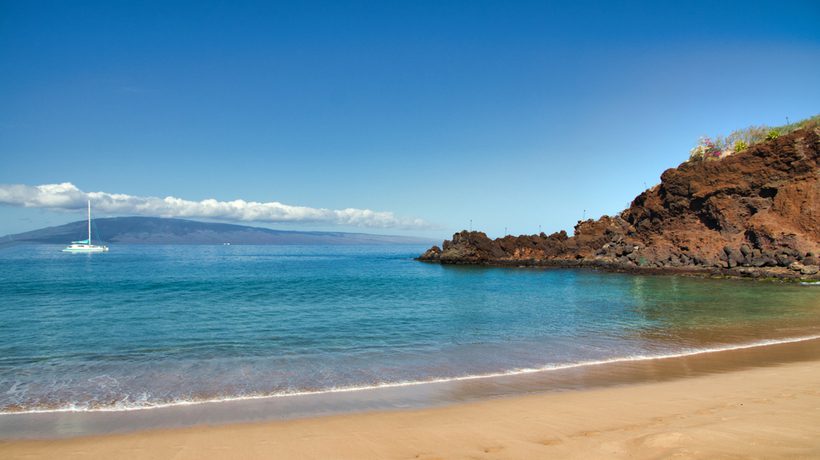
Located on the northwestern side of Maui, Hawaii’s second largest island, Kaanapali Beach was part of Hawaii’s first holiday resort and at one time held the title of “America’s Best Beach.” Now surrounded by seven resorts and various restaurants, hotels and shops that accompany any great vacation spot, Kaanapali Beach offers all the pleasures of relaxing at the beach while providing many modern amenities.
Only about 50 miles away from Kahului Airport, it’s also easy to find (just drive down Ka’anapali Parkway and stop around mile marker 24). If you’re looking for public parking around Kaanapali Beach, look for parking lots with signs that have “Beach Access” written on them. Visitors who have a hard time finding a good public parking spot (especially on Kaanapali Beach’s northern side) may want to consider parking in the Whalers Village parking lot. Remember to check parking rates and other factors before using any of the resort parking lots.
Spanning three miles, Kaanapali Beach somehow manages to balance all the surrounding commercial areas without losing its natural beauty. After leaving their hotels or parking in one of the five public parking spaces around the beach, visitors can walk onto this brilliant beach and enjoy surfing, snorkeling or simply sitting on the sand and watching for whales. Many visitors enjoy visiting the nearby rock formation Puu Kekaa (also known as the Black Rock). In the evenings, a cliff jumper lights a torch and dramatically plummets off the cliff, reenacting a feat by Maui’s famous King Kahekili. Whenever you’re finished for the day (or want to take a break and tour the nearby resorts), you can change your swimsuit in many of the beach showers or store restrooms surrounding Kaanapali Beach.
You can visit Kaanapali Beach any time of the year, but swimmers should come during fall (September to mid-December) or spring (mid-April to mid-June), when the water currents are weakest. The fall season brings Maui’s best weather and least amount of tourists, making it an even better time to come. To find out how rough or calm the waves are, talk to the workers at the various beach shacks along the shore. Since Kaanapali is a public beach, you may not be able to find lifeguards on duty at all times, so remember to be careful while in the water.
Snorkeling gear and other beach equipment is available for purchase at the stores around Kaanapali Beach, but consider bringing your own gear from home if you want to save money. Learn how to surf or bodyboard or stop by one of the beach activity kiosks for information and gear for snorkeling, scuba diving or windsurfing. For a fun adventure, you can also book a snorkel sail, parasailing, sunset dinner sail or whale-watching excursion.
Visitors who want to enjoy the nearby attractions can check out the Whalers Village shopping center or take a zip-line ride over the beach from Kaanapali Skyline Eco Adventures. Or, if you’re looking for something a little quieter while still getting in some exercise, try the Royal Kaanapali or Kaanapali Kai golf courses. Visitors who want to check out the nightlife may want to try out the restaurants and hotels within the multiple resorts surrounding Kaanapali Beach.
There are a variety of events going on year round. If you are in Maui in October, check out the Hawaii Food and Wine Festival. In November, see a children’s hula competition at the Hula O Nā Keiki at the Kāʻanapali Beach Hotel. For a taste of Hawaiian culture, attend the Olukai Ho’olaule’a in May or the East Maui Taro Festival in April.
Since the area is developed, there are lots of options for accommodation nearby, including the Kaanapali Beach Club, Kaanapali Beach Hotel and the Kaanapali Alii Resort. Expect to pay top dollar for these hotels, since they usually run upwards of $400 a night.
Lanikai Beach, Kailua (O´ahu)
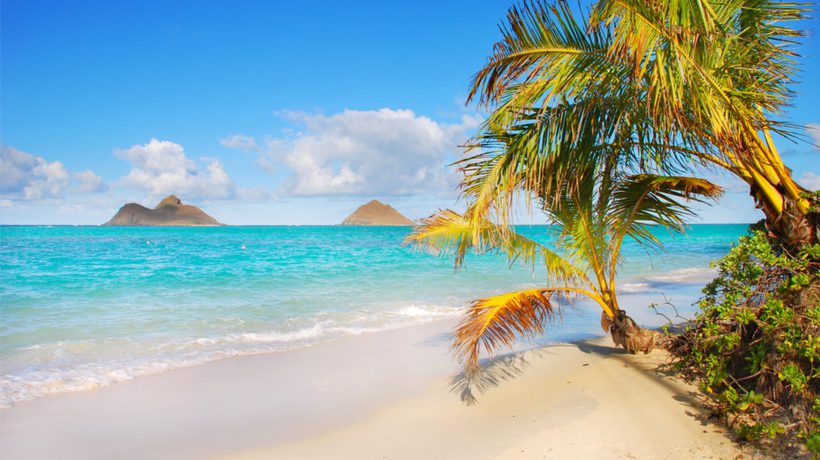
The word Lanikai translates to “heavenly ocean,” and it is an apt name for this beach, consistently rated one of the best beaches in the world. It is on the windward side of O’ahu just south of Kailua Beach Park. There is no parking lot (although there is street parking) or an obvious entrance to the beach; access is through six different alleyways between residential waterfront properties. Be careful to observe parking regulations, as enforcement is strict.
The beach has powdery white sand, which contrasts with the sparkling, turquoise and cobalt water. The water is clear here, giving great visibility to the fish and other marine creatures living there and, unlike many other Hawaiian beaches, the surf is calm making it perfect for families with children.
From the beach, you can see the Mokulua Islands, also called “the Mokes.” These iconic islands are featured on everything from t-shirts to bumper stickers and are bird sanctuaries that are mostly off-limits to people, although you can kayak around them and land in one small area. The beach looks like a classic Hawaiian beach, bordered by palm trees and other tropical vegetation and is perfect for sunbathing, building sand castles and other beach fun.
Just off the shore are numerous outcrops of rock, which, combined with the calm and relatively shallow waters, make it good for swimming, even for children and beginners. There is not much coral there, but if you want to snorkel, head toward the dark patches where the rocks may shelter fish and crabs. Visitors also take advantage of the flat seas by kayaking and paddleboarding. Pets are allowed on the beach, so feel free to bring your water-loving dog.
Lanikai Beach has no facilities, lifeguards or food, so be sure to bring everything you need. The closest restrooms are at Kailua Beach, which is about a mile away. Before going to the beach, stop by the Kalapawai Market near Kailua Beach Park for to-go sandwiches. After you’ve dried off, consider going to Buzz’s for one of their famous mai-tais and a couple appetizers.
Just above the beach is the Lanikai Pillbox Hike, one of the most scenic trails on O’ahu. It is a steep one-mile hike to the top. The summit is an ideal place to watch the sunrise and get some unforgettable views. Since this beach is on the eastern side of the island, it is best to get there early in the day; in the afternoon, the beach is shaded by the Koolau Mountains.
There are charming cottages and bed & breakfasts nearby such as the Paradise Palms B&B or Hawaii’s Hidden Hideaway Bed & Breakfast, or you could stay at one of the larger resorts which are a bit further away.
Punaluu Beach, Pahala (Big Island)
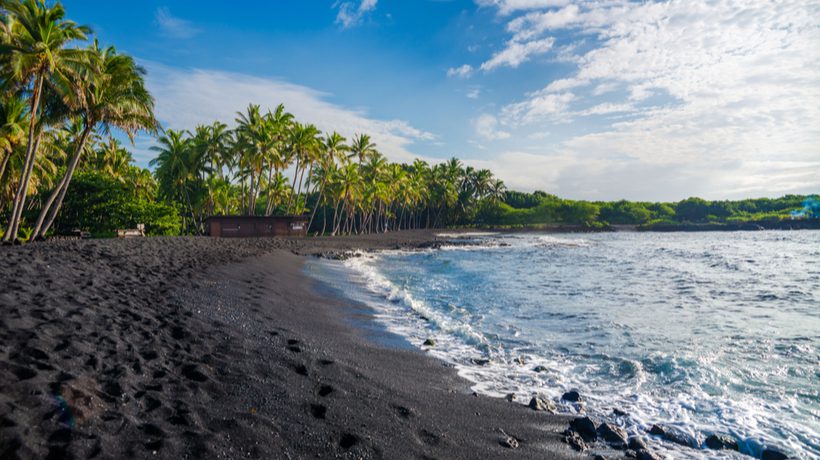
Punaluu Beach is located between the towns of Pahala and Naalehu in Kau and is one of Hawaii’s most famous black sand beaches. The beach is just off Highway 11 between Volcano Village and the town of Naalehu.
Black sand is from volcanic eruptions, and Punaluu Beach is near Hawaii Volcanoes National Park, which is an interesting side trip. Be sure to wear shoes there; the black sand retains heat that can be rough on feet. The beach is fringed with coconut palms and you may discover that the large smooth rocks you see are actually Hawaiian green sea turtles or endangered hawksbill turtles, which use this beach to sunbathe. This is one of the few places in the world that sea turtles bask on land. Federal law protects the turtles, so look, but don’t touch!
Currents can be strong here, so it is not advisable to go swimming alone or at all if you are not a strong swimmer. However, lifeguards are on duty from 8:30 AM to 5:00 PM. If you do venture into the water, you may notice areas of both warm and cold water, since several underwater springs end here. There are some larger rocks in the water, so water shoes or snorkeling fins are recommended so you don’t cut your feet. If you really want to snorkel, take a five minute walk to the southwest to Ninole Cove, where there is a sheltered bay.
There are plenty of picnic tables, restroom facilities and even an outdoor shower. Stay near the beach at Sea Mountain’s apartment units or at Mauna Kai’iki. Pick up a loaf of Hawaii’s famous sweet bread at the Punalu’u Bake Shop or grab a casual lunch at the Hana Hou Restaurant.

